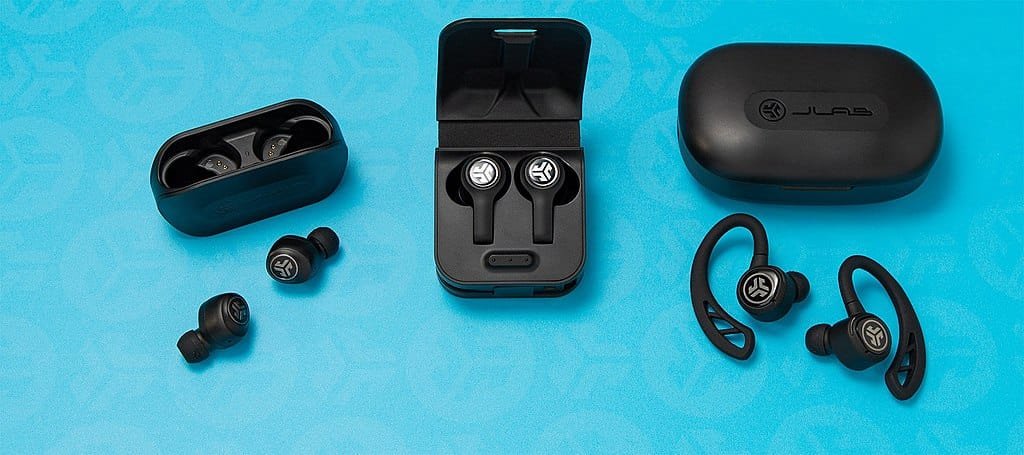Earbuds have become an essential part of our daily lives, offering a convenient way to enjoy music, podcasts, and calls on the go. Over the years, earbud technology has evolved significantly, transforming from simple wired devices to sophisticated true wireless earbuds with advanced features. When you search for earbuds on Amazon, you come across many in different price range. You ask yourself, how to buy a wireless earbud when so many are there.
This article explores the journey of earbuds, explains key technical terms, and delves into the technology behind them. This is to enable how to buy a Wireless Earbud, the most sought-after gadget of the current times. This article does not recommend any earbud but rather focuses on how to buy a wireless earbud, rather than which one to buy.
The Early Days: Wired Earbuds

The journey of earbuds began in the early 20th century with the invention of the first headphones. These early devices were bulky and uncomfortable, primarily used for radio and telephone operations. The first commercial earbuds appeared in the 1950s, designed for professional use in broadcasting and recording. These wired earbuds were simple, with a cable connecting the earbuds to the audio source, providing reliable sound quality.
The Advent of Stereo Earbuds
In the 1960s, stereo earbuds were introduced, featuring two drivers for each ear, allowing for a more immersive audio experience. This innovation quickly gained popularity among music enthusiasts, who could now enjoy their favorite albums in private.
The Rise of Wireless Earbuds
The introduction of Bluetooth technology in the early 2000s marked a significant milestone in earbud evolution. Bluetooth enabled wireless communication between devices, eliminating the need for cables and providing users with more freedom of movement. Early wireless earbuds were bulky and had limited battery life, but they paved the way for future innovations.
True Wireless Earbuds
The launch of true wireless earbuds in 2015 revolutionized the market. These earbuds, with no wires connecting the two earpieces, offered unparalleled convenience and portability. Advances in battery technology, Bluetooth connectivity, and audio quality have made true wireless earbuds a popular choice for consumers.
How to buy a Wireless Earbud?
Modern earbuds come packed with features that enhance the listening experience. Here are some key technologies to look for when buying true wireless earbuds:
- Active Noise Cancellation (ANC): ANC technology uses microphones and speakers to reduce unwanted ambient sounds, providing a more immersive listening experience.
- Decibels (dB): Decibels measure the intensity of sound. Understanding dB levels can help you choose earbuds that provide the right volume and sound quality for your needs.
- Bluetooth: Bluetooth technology enables wireless communication between earbuds and devices. Look for earbuds with the latest Bluetooth version for better connectivity and battery life.
- Battery Life: Battery life is crucial for wireless earbuds. Consider earbuds with long battery life and quick charging capabilities.
- Water Resistance (IPX Ratings): Water-resistant earbuds are ideal for workouts and outdoor activities. Check the IP rating to ensure they can withstand sweat and rain.
Understanding Technical Terms
Navigating the technical jargon associated with earbuds can be challenging. Here are some common terms explained:
- Frequency Response: This refers to the range of frequencies an earbud can reproduce, typically measured in Hertz (Hz). A wider frequency response range means better sound quality.
- Impedance: Measured in ohms, impedance indicates how much power is required to drive the earbuds. Lower impedance earbuds are easier to drive and work well with portable devices.
- Soundstage: This term describes the perceived spatial location of sound. A wider soundstage provides a more immersive listening experience.
- Driver: The driver is the component that converts electrical signals into sound. Larger drivers generally produce better sound quality.
Understand the technology before you decide how to buy a wireless earbud?
Modern earbuds incorporate various technologies to deliver high-quality sound and seamless connectivity. Here’s a look at some of the key components:
- Bluetooth Module: The Bluetooth module facilitates wireless communication between the earbuds and paired devices. It ensures reliable connectivity and efficient data transfer.
- Audio Codec: Audio codecs encode and decode digital audio signals, ensuring high-quality sound reproduction.
- Amplifier: The amplifier boosts audio signals to drive the earbud speakers, delivering rich and immersive sound.
- Battery Management System: This system regulates power distribution and optimizes energy efficiency, extending battery life.
- Microphones and Sensors: These components enable features like voice commands, ambient noise reduction, and touch controls.
What are Drivers in Earbuds?
Drivers are crucial components in earbuds, responsible for converting electrical signals into sound. The size of the driver, measured in millimeters (mm), significantly impacts the sound quality. Here’s a breakdown of driver sizes and their effects:
- 6mm to 8mm Drivers: These smaller drivers are common in compact earbuds. They provide clear sound but may struggle with deep bass.
- 10mm Drivers: Medium-sized drivers offer a balanced audio profile, delivering good bass response and clarity.
- 11mm to 13mm Drivers: Larger drivers produce deeper bass and a more immersive audio experience. They are favored by audiophiles and bass enthusiasts.
The driver consists of three main parts: the diaphragm, voice coil, and magnet. The diaphragm vibrates to create sound waves, the voice coil moves in response to electrical signals, and the magnet provides the necessary magnetic field.
What are IPX Ratings ?
IPX ratings indicate the level of water resistance in earbuds. Here’s a quick guide to the different IPX ratings:
- IPX4: Resistant to splashes from any direction.
- IPX5: Can withstand low-pressure water jets from any direction.
- IPX6: Can handle high-pressure water jets.
- IPX7: Can be submerged in water up to 1 meter for 30 minutes.
- IPX8: Can be submerged in water deeper than 1 meter.
What is True Wireless Stereo (TWS) ?

TWS stands for True Wireless Stereo, a technology that allows for the wireless transmission of audio signals between two earbuds, creating a stereo sound experience without the need for a physical connection. Each earbud operates independently, providing a seamless and synchronized audio experience.
Environmental Noise Cancellation (ENC)
ENC technology enhances voice clarity during calls by isolating your voice from background noise. It uses multiple microphones to capture and filter ambient sounds, ensuring clear communication.
Ultra-Low Latency
Latency refers to the delay before audio is played after being transmitted. Ultra-low latency is crucial for activities like gaming and video watching, where synchronization between audio and visual elements is essential. Low latency earbuds minimize this delay, providing a more seamless experience.
The evolution of earbud technology has been remarkable, transforming from simple wired devices to advanced wireless gadgets with a plethora of features. Understanding the key technologies and technical terms can help you make an informed decision on how to buy a wireless earbud. Whether you prioritize sound quality, battery life, or water resistance, there’s a perfect pair of earbuds out there for you.









